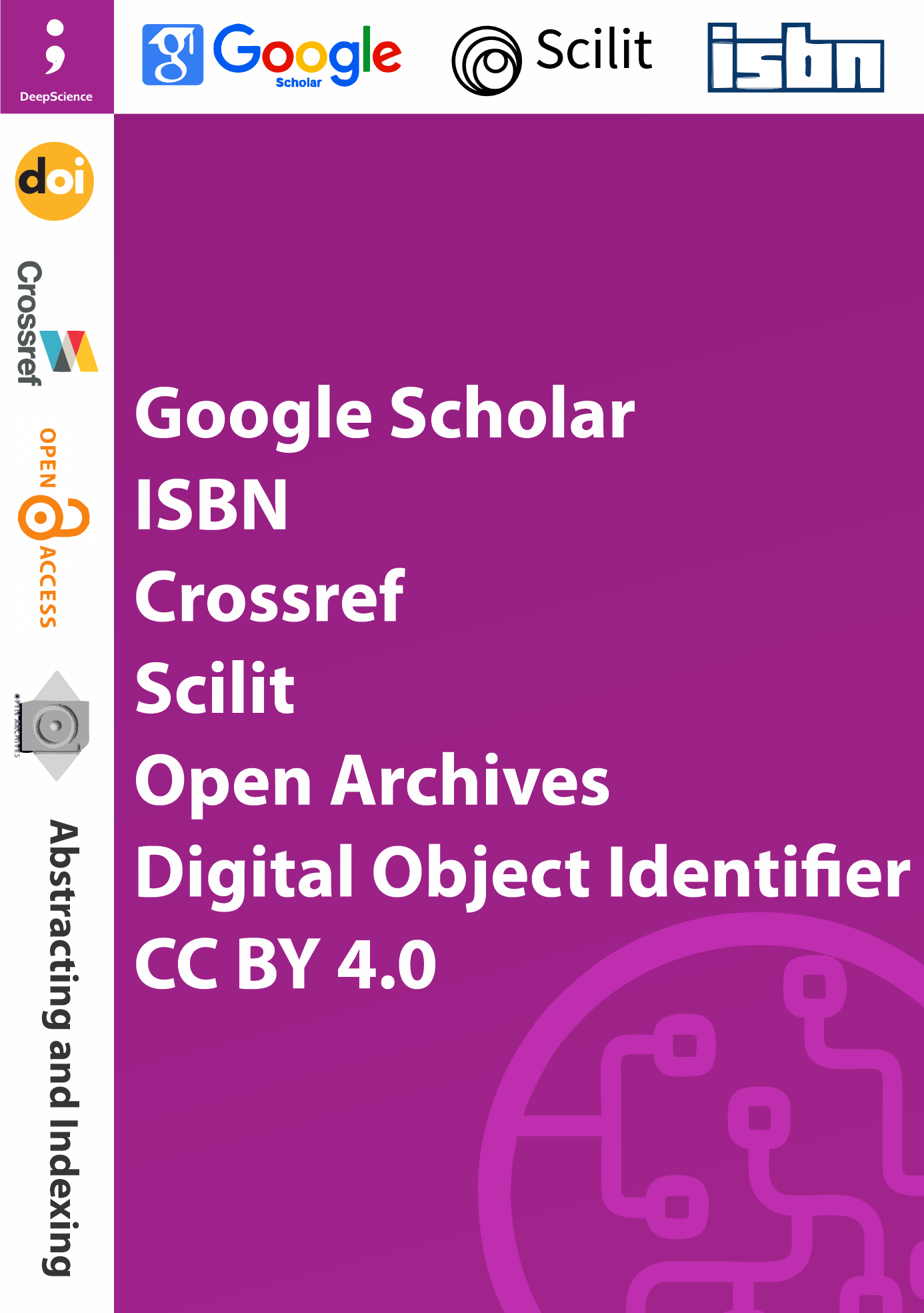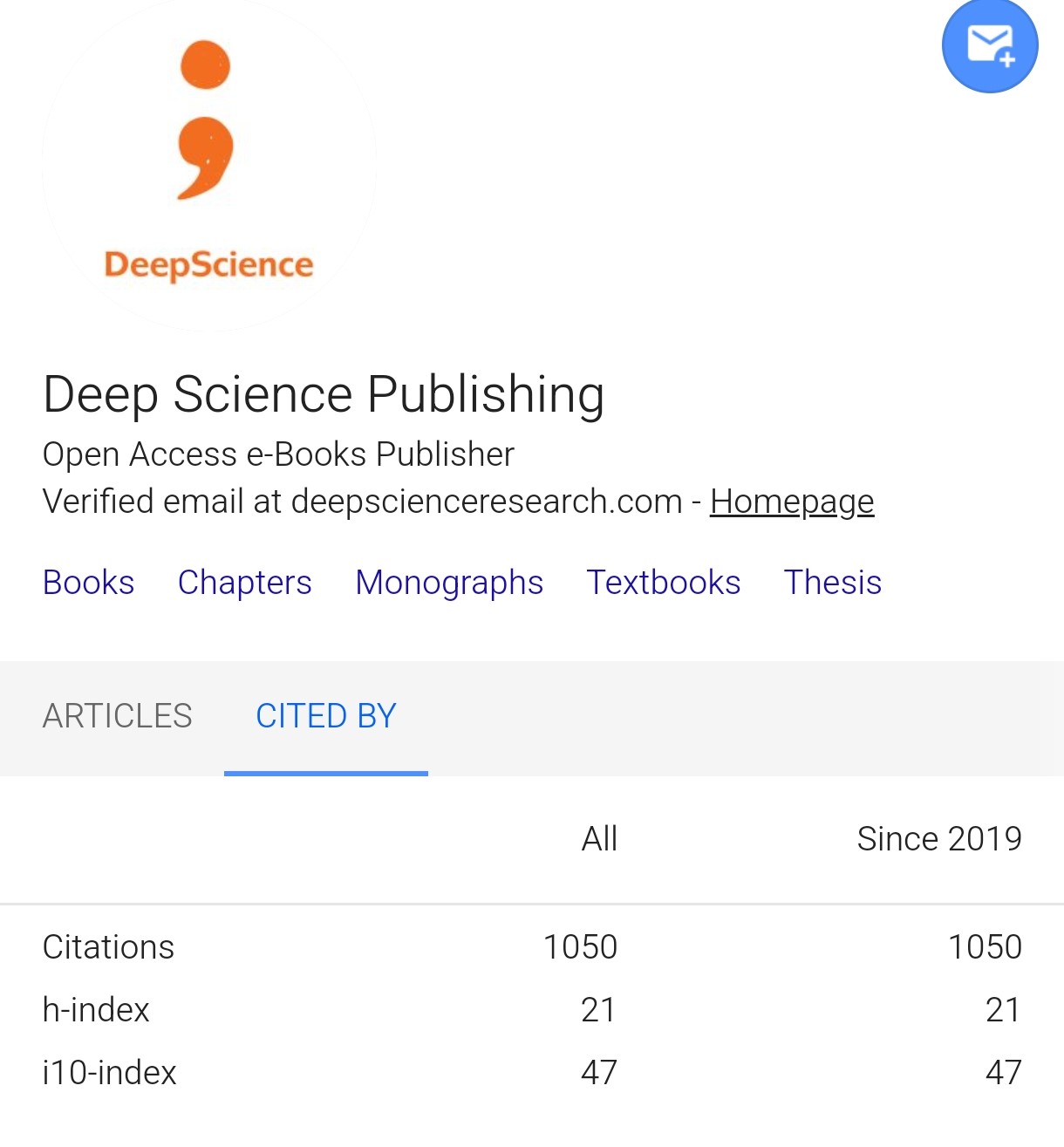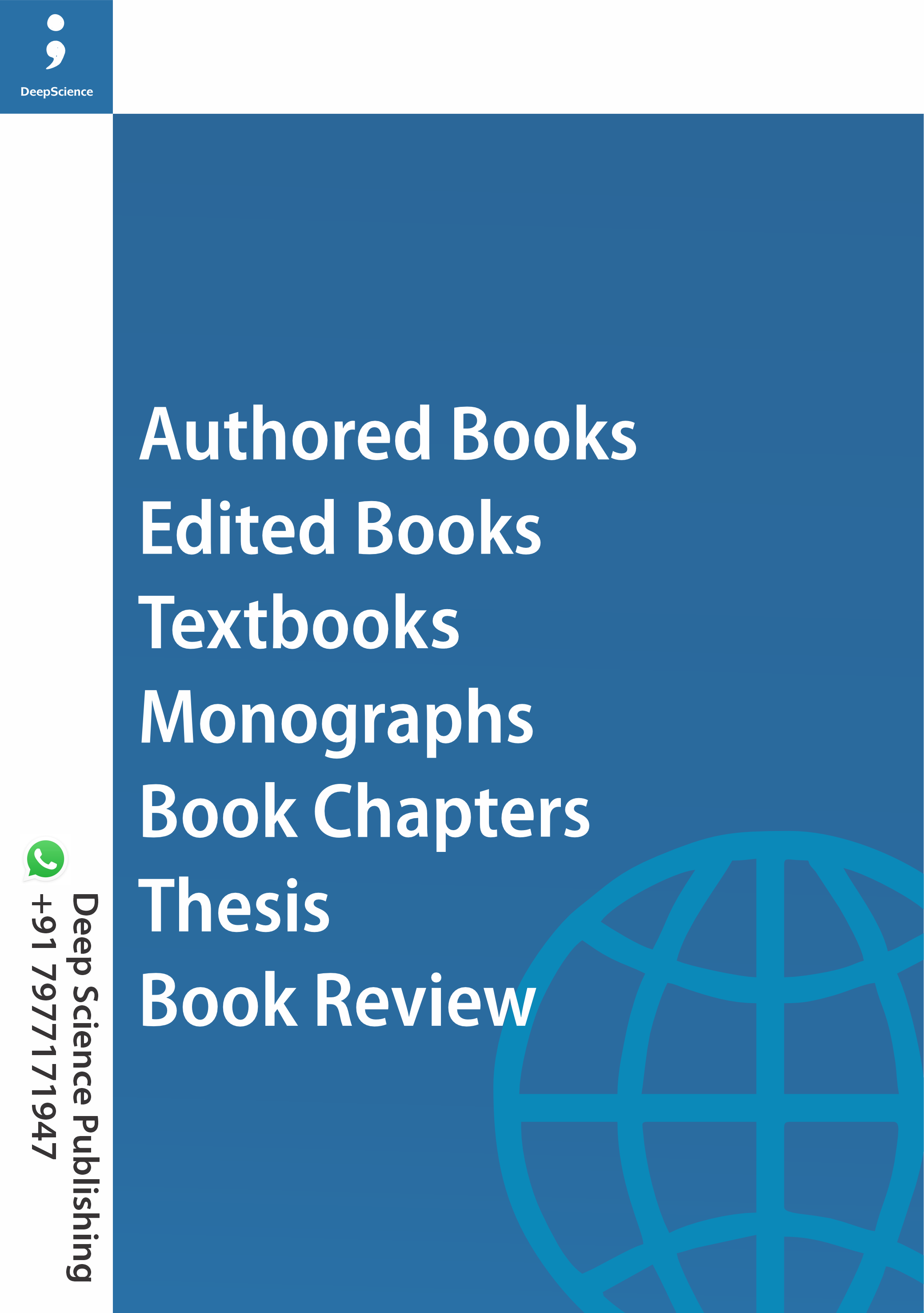Male Suicide Phenomena in Zimbabwe: Drivers, Obstacles and Strategic Interventions
Keywords:
Mental health, Men, Risk factors, Social stigma, Suicide, ZimbabweSynopsis
The catalyst for this book, "Male Suicide Phenomena in Zimbabwe: Drivers, Barriers and Strategic Interventions," emerges from a combination of pertinent observations and extensive engagements with the emerging narrative around male suicides in Zimbabwe. The understanding, measuring, and response to pertinent dialogue on male suicides have changed considerably over time in relation to varying local imperatives, international evolutions, and the greater decolonisation effort in education. This paper seeks to critique these changes, providing both a reflective and forward-looking perspective on how we can re-imagine suicide and mental health in Zimbabwe. In my work as a senior lecturer at Great Zimbabwe University, a Research Fellow at the University of Stellenbosch, and a postdoctoral research fellow at the University of KwaZulu-Natal (South Africa), not to mention as a university counsellor at Midlands State University, Zimbabwe, I have had the unique experience of encountering the vast challenges surrounding the teaching and learning of male suicides as well as the fluctuating opportunities for male learners in connecting with the complexities of their lives. The breadth of my professional experience, developing curriculum, supervising students, and conducting academic research, has revealed to me a profound disconnect between the best intentions of policy and the hard realities of practice. It is written from an earnest need to fill those gaps by providing a contextually relevant, situated approach to the context-driven decolonisation and revitalisation of male mental health education in Zimbabwe. The book tracks the historical and contemporary trends of male suicides and mental health curricula in Zimbabwean learning institutions and communities vis-à-vis the wider Africa and the world within these pages. It examines the theoretical foundations of these educational modules, the organizational and pedagogical barriers that prevent them from being effective, and outlines practical solutions. Drawing on comparisons with other Southern African countries, this book emphasises key tenets for designing new curricula and school curricula, policy initiatives, and pedagogic activities that can help inform curriculum reform, policy development, and classroom practice. My own odyssey in this field—spanning roles as a senior lecturer, university counsellor, researcher, and examiner—has deepened my understanding of the intricate intersections between Health Life Skills, inclusive education, educational psychology, and pressing societal issues such as male suicides, HIV/AIDS, substance abuse, and mental health. Having supervised diploma, honours, and master’s students, as well as serving as an internal and external examiner in both Zimbabwe and South Africa, I bring a blend of scholarly rigor and practical insights to this discourse. My previous publications on gender, educational psychology, and psychosocial challenges further enrich the perspectives shared in this book. This publication is designed to empower a diverse audience—practitioners, administrators, teacher educators, curriculum developers, policymakers, and students—by equipping them with both theoretical and practical tools to mitigate male suicides and enhance mental well-being education. It is my earnest hope that this book will stimulate critical dialogue, inspire pedagogical innovation, and contribute meaningfully to the ongoing decolonization of education in Zimbabwe and beyond. Finally, I extend my deepest gratitude to the scholars, students, and institutions whose invaluable contributions have shaped this work. The journey of re-envisioning education is a collective endeavor, and this book represents but one step toward a more inclusive, responsive, and transformative pedagogical future.
References
Engel, B. (2023). The emotionally abusive relationship: How to stop being abused and how to stop abusing. London: Wiley.
Feigelman, W., Cerel, J., McIntosh, J. L., Brent, D., & Gutin, N. (2018). Suicide exposures and bereavement among American adults: Evidence from the 2016 general social survey. Journal of Affective Disorders,22(7), 1–6.https://doi.org/10.1016/j.jad.2017.09.056
Gijzen, M. W., Rasing, S. P., Creemers, D. H., Engels, R. C., & Smit, F. (2022). Effectiveness of school-based preventive programs in suicidal thoughts and behaviors: A meta-analysis. Journal of Affective Disorders,8(2), 408–420.https://doi.org/https://doi.org/10.1016/j.jad.2021.10.062
Gwarisa, M. (221). Rise In Suicides Among Zimbabwe Male Tertiary Learners Exposes Need for Peer-to-Peer Counseling in Zim Universities and Colleges. London: Pearson
Holmes G, Clacy A, Hermens DF, & Lagopoulos J. (2021)The long-term efficacy of suicide prevention gatekeeper training: A systematic review. Archives of Suicide Research, 25(2), 177–207. https://doi.org/10.1080/13811118.2019.1690608.Ivey-
Stephenson, A. Z., Demissie, Z., Crosby, A. E., Stone, D. M., Gaylor, E., Wilkins, N., Lowry, R., & Brown, M. (2020). Suicidal ideation and behaviors among high school learners —Youth Risk Behavior Survey, United States, 2019. MMWR Supplements, 69(1), 47–55.https://doi.org/https://doi.org/10.15585/mmwr.su6901a6
Jordans, M., Rathod, S., Fekadu, A., Medhin, G., Kigozi, F., Kohrt, B., Luitel, N., Petersen, I., Shidhaye, R., Ssebunnya, J., Patel, V., & Lund, C. (2018). Suicidal ideation and behaviour among community and health care seeking populations in five low-and middle-income countries: A cross-sectional study. Epidemiology and Psychiatric Sciences,27(4), 393–402.https://doi.org/10.1017/S2045796017000038
Kaggwa, M. M., Muwanguzi, M., Najjuka, S. M., Nduhuura, E., Kajjimu, J., Mamun, M. A., Arinaitwe, I., Ashaba, S., & Griffiths, M. D. (2022). Risky sexual behaviours among Ugandan university learners : A pilot study exploring the role of adverse childhood experiences, substance use history, and family environment. PloS One,17(11), 29-56.https://doi.org/10.1371/journal.pone.0277129
Kappel, R. H., Livingston, M. D., Patel, S. N., Villaveces, A., & Massetti, G. M. (2021). Prevalence of adverse childhood experiences (ACEs) and associated health risks and risk behaviors among young women and men in Honduras. Child Abuse & Neglect,1(5), 1-14.https://doi.org/10.1016/j.chiabu.2021.104993
Karatekin, C. (2018). Adverse childhood experiences (ACEs), stress and mental health in college learners . Stress and Health: Journal of the International Society for the Investigation of Stress,34(1), 36–45.https://doi.org/10.1002/smi.2761
Knettel, B. A., Knippler, E., Martinez, A., Sardana, S., Agor, D., Mwobobia, J., Ledbetter, L., Amiri, I., Relf, M. V., & Goldston, D. B. (2023). A scoping review of counseling interventions for Suicide prevention in Africa: Few studies address this life-saving. 369RESSAT 2025, 10(1): 355-374aspect of mental health treatment. Journal of Affective Disorders,3(2), 183–190.https://doi.org/10.1016/j.jad.2023.02.038
Kupemba, D., N. (2021). In Zimbabwe, Toxic Masculinity is Driving Male Suicide Rates. Harare: Mambo Press.
Kurtz, M., Kawka, H., Horstick, O., Brenner, S., Deckert, A., Louis, V. R., Winkler, V., Lowery Wilson, M., Bärnighausen, T., & Dambach, P. (2023). The prevalence of emotional abuse in children living in Sub-saharan Africa—a systematic review. Child Abuse & Neglect,1(4),10-18.https://doi.org/10.1016/j.chiabu.2023.106155
Lambie GW, Stickl Haugen J, & Borland JR, (2019). Who took “counseling” out of the role of professional school counselors in the United States? Journal of School-Based Counseling Policy & Evaluation, 1(3):51–61.https:// doi.org/10.25774/7kjb-bt85.
Lee, N., Massetti, G. M., Perry, E. W., & Self-Brown, S. (2022). Adverse childhood experiences and associated mental distress and Suicide risk: Results from the Zambia Violence against children survey. Journal of Interpersonal Violence,37(21), NP21244–NP21265.https://doi.org/10.1177/08862605211056726
Li, S., Wang, S., Gao, X., Jiang, Z., Xu, H., Zhang, S., Sun, Y., Tao, F., Chen, R., & Wan, Y. (2021). Patterns of adverse childhood experiences and suicidal behaviors in adolescents: A four-province study in China. Journal of Affective Disorders,28 (5), 69–76.https://doi.org/10.1016/j.jad.2021.02.045
Maple, M., Pearce, T., Sanford, R., Cerel, J., Dransart, D. A. C., & Andriessen, K. (2018). A systematic mapping of suicide bereavement and postvention research and a proposed strategic research agenda. Crisis Journal ,39(4), 275–282.https://doi.org/https://doi.org/10.1027/0227-5910/a000498
Marraccini, M. E., & Pittleman, C. (2022). Returning to school following hospitalization for suicide-related behaviors: Recognizing learner voices for improving practice.School Psychology Review, 51(3), 370–385.https://doi.org/https://doi.org/10.1080/2372966X.2020.1862628
Marraccini, M. E., Griffin, D., O’Neill, J. C., Martinez, R. R., Jr., Chin, A. J., Toole, E. N., Grapin, S. L., & Naser, S. C. (2022). School risk and protective factors of suicide: A cultural model of suicide risk and protective factors in schools. School Psychology Review,51(3), 266–289.https://doi.org/https://doi.org/10.1080/2372966X.2020.1871305
Marraccini, M. E., Ingram, K. M., Naser, S. C., Grapin, S. L., Toole, E. N., O’Neill, J. C., Chin, A. J., Martinez, R. R., & Griffin, D. (2022). The roles of school in supporting LGBTQ + youth: A systematic review and ecological framework for understandingrisk for suicide-related thoughts and behaviors. Journal of School Psychology, 9 (6), 27–49.https://doi.org/https://doi.org/10.1016/j.jsp.2021.11.006
Martínez-Alés, G., & Keyes, K. M. (2019). Fatal and non-fatal self-injury in the USA: Critical review of current trends and innovations in prevention. Current Psychiatry Reports,21(10), 1–11.https://doi.org/https://doi.org/10.1007/s11920-019-1080-6
Saruchera, M., & Chidarikire, M. (2025). Educators’ Role in Mitigating Suicidal Propensities among Zimbabwe Rural Secondary Male Learners: An Exploration of Challenges and Interventions Mechanisms. Research in Social Sciences and Technology, 10(1), 355-374. https://doi.org/10.46303/ressat.2025.19













